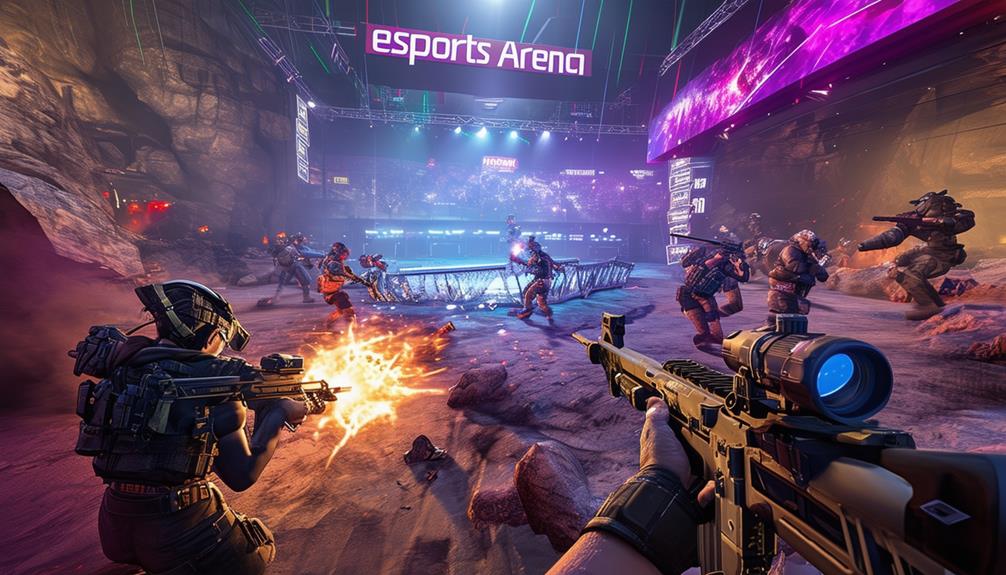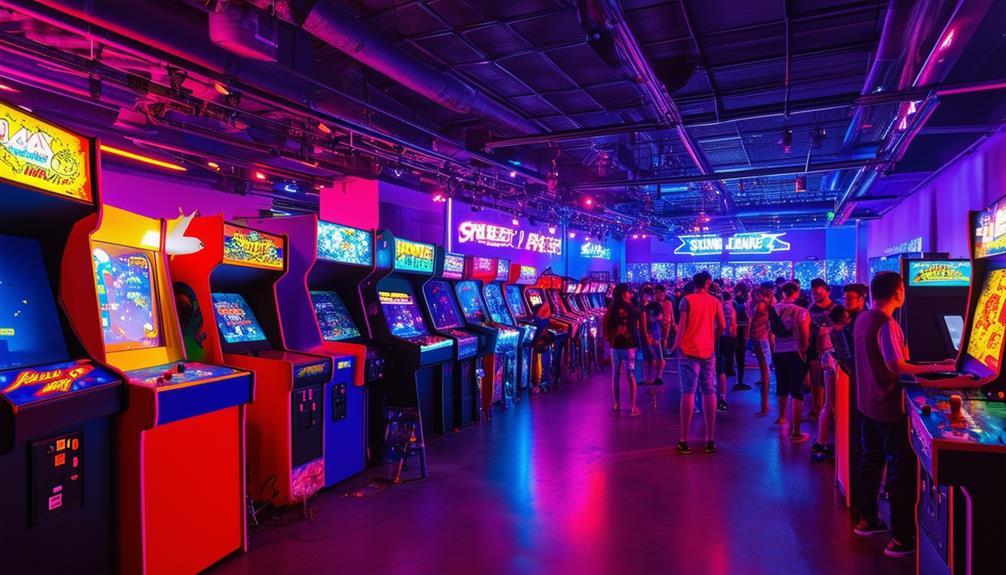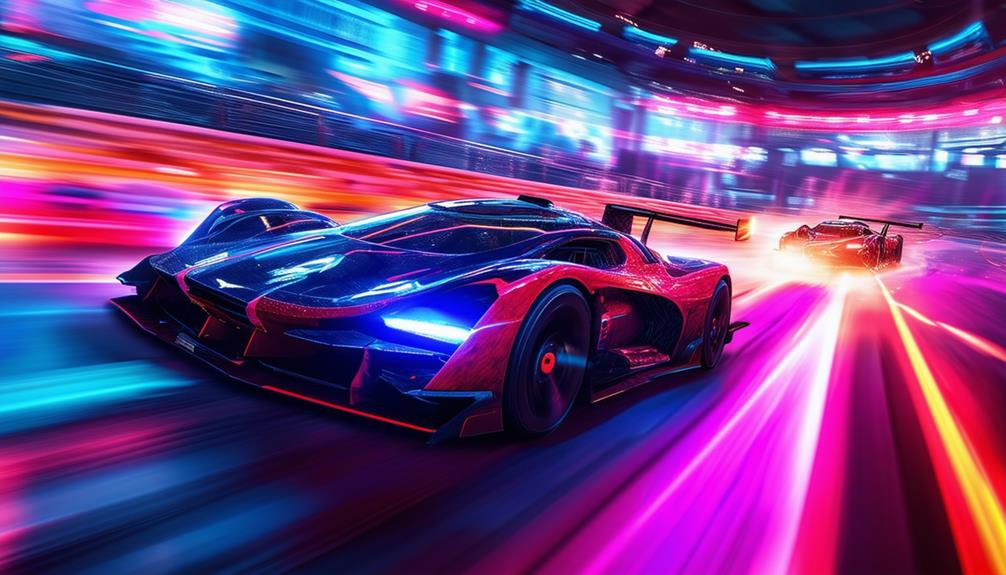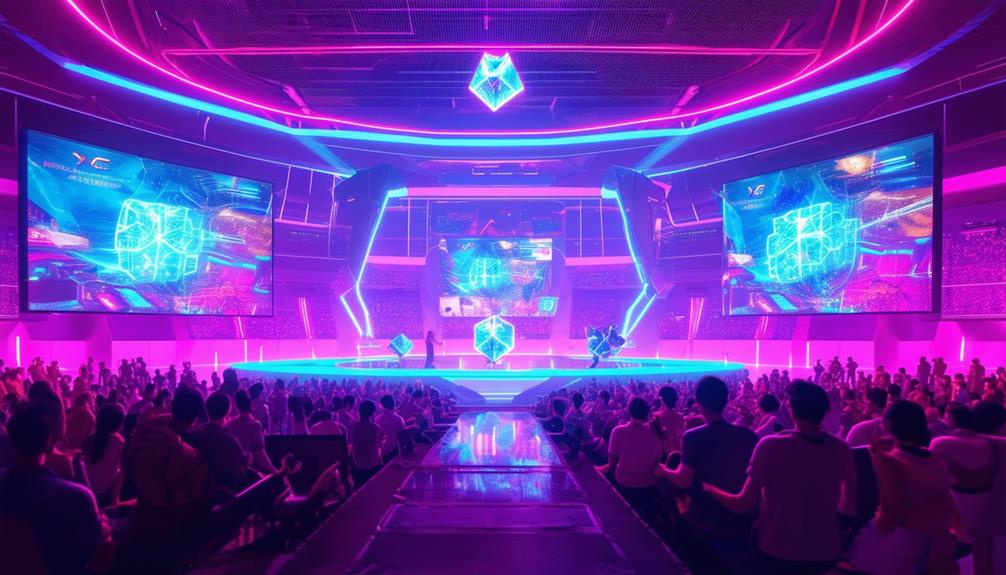Analyzing the Most Popular Esports Genres
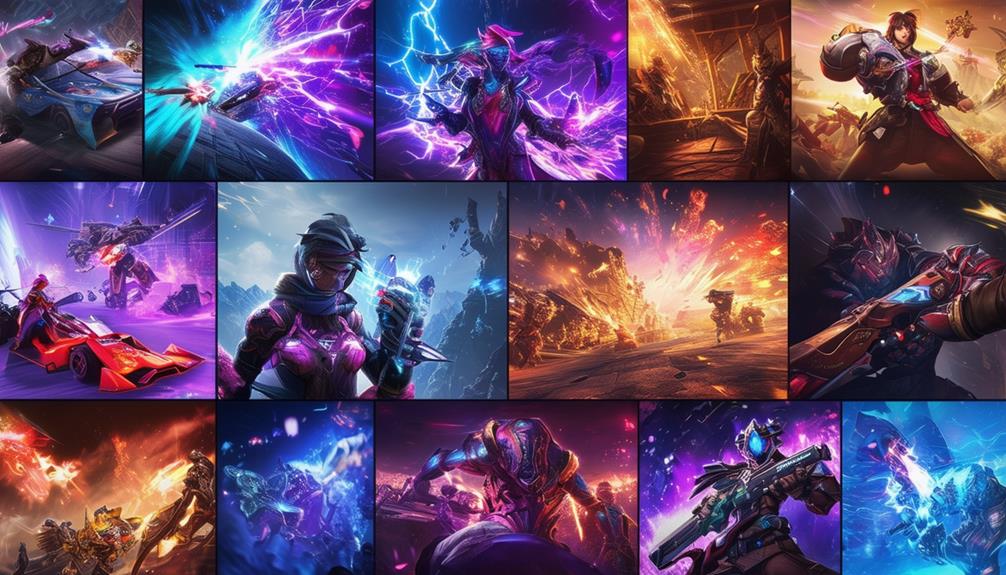
When considering the most popular esports genres, it's evident that the competitive gaming landscape has become incredibly diverse.
From the strategic intricacies of MOBAs like League of Legends to the adrenaline-pumping action of FPS games such as Counter-Strike: Global Offensive, each genre has its unique allure.
Battle Royale games like Fortnite introduce an element of unpredictability, while fighting games and sports simulators attract those who appreciate individual skill and realism.
Real-time strategy games, exemplified by Age of Empires IV, challenge players with complex decision-making.
But what makes each of these genres so compelling?
Key Takeaways
- MOBAs like League of Legends emphasize teamwork and strategy, appealing to both players and spectators.
- FPS games such as Counter-Strike focus on precise aim and team coordination, drawing large audiences with their high-stakes gameplay.
- Battle Royale games engage players with elimination mechanics, dynamic map changes, and survival challenges in a shrinking play area.
- Fighting games highlight individual skill, precise timing, and strategic thinking in fast-paced, intense matches.
- Sports simulators replicate real-life sports, attracting fans with realistic gameplay, particularly in racing and soccer simulations.
MOBAs
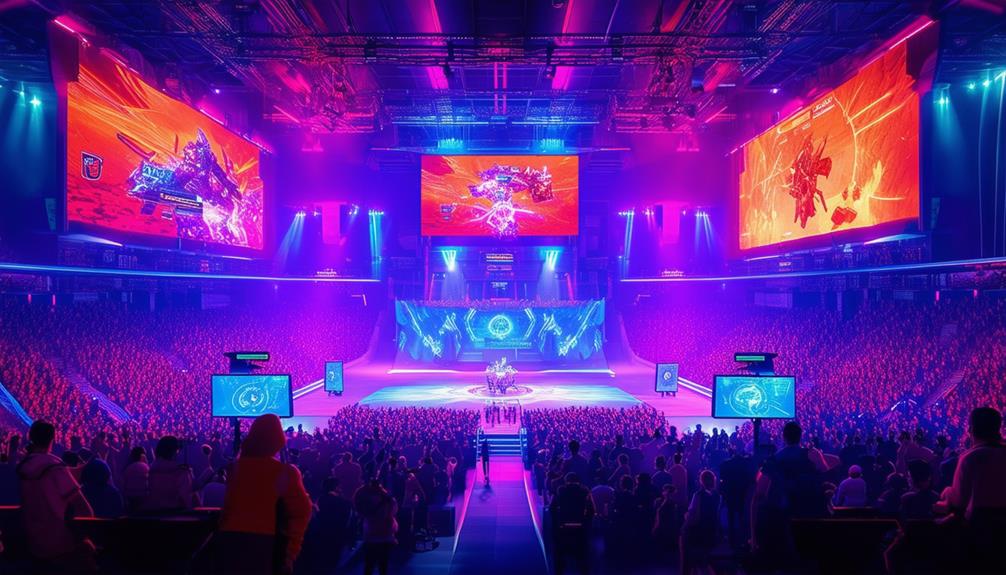
MOBAs, or Multiplayer Online Battle Arenas, are a cornerstone of the esports world, thanks to titles like League of Legends and Dota 2. These games captivate millions by emphasizing teamwork, strategy, and map control. Players and their teams aim to dismantle enemy structures on symmetrical maps, adding a layer of strategic depth to each match.
While traditional MOBAs continue to dominate, mobile versions such as Mobile Legends: Bang Bang are gaining popularity. These mobile games offer the same intense, strategic gameplay on a more accessible platform, allowing for play and spectating on the go. This trend reflects a growing emphasis on accessibility and convenience in the esports landscape.
What sets MOBAs apart is their dual appeal to both players and spectators. The intricate strategies involved keep everyone engaged, whether participating in the game or watching a competitive event.
This broad appeal has led to the establishment of numerous competitive leagues and tournaments worldwide, attracting large audiences and solidifying MOBAs' status in the esports arena.
FPS Games
Few genres in esports are as exhilarating as FPS games, where titles like Call of Duty and Counter-Strike dominate the landscape. These games emphasize gun-based combat and excel in team multiplayer modes, making them a cornerstone of competitive play. Engaging in an FPS game isn't just about playing; it's about participating in a high-stakes experience that demands quick reflexes and strategic teamwork.
Competitive play in FPS games often revolves around intense game modes such as Bomb Defuse, where each team has specific objectives, and every round can shift the momentum. Mastery in these games requires more than just sharp aim; it involves mastering positioning, map control, and understanding symmetrical maps that ensure balanced gameplay for both teams.
In team multiplayer modes, communication and coordination with your teammates are crucial. You must work together seamlessly, leveraging each player's strengths to outmaneuver and outgun the opposing team.
FPS esports attract a sizable audience, and it's easy to see why. The thrill of watching or participating in a well-coordinated team effort, the tension of close matches, and the satisfaction of executing a flawless strategy make FPS games a foundational element of the esports world.
Battle Royale

When you think about Battle Royale games, rapid player elimination and dynamic map changes immediately come to mind. These elements create high-stakes gameplay that keeps you on the edge of your seat.
Whether through strategic positioning or intense combat, every decision can make or break your chance at victory.
Rapid Player Elimination
In Battle Royale games like PUBG and Fortnite, players compete to be the last one standing by eliminating opponents on a large, resource-rich map. This genre thrives on intense gameplay, where player elimination is the core objective. Players must scavenge for weapons and resources, make strategic decisions, and manage their inventory to outlast opponents. It's not just about shooting; it's also about knowing when to engage or retreat.
The popularity of Battle Royale games is evident from their high viewership numbers and player engagement. Both gamers and viewers are drawn to the unpredictable and high-stakes nature of these titles. Each match presents a unique scenario, requiring quick reflexes and smart strategies to survive. The thrill of potentially being the last player standing keeps everyone on the edge of their seat.
Esports tournaments featuring Battle Royale games have become massive events, attracting large audiences and significant sponsorships. The adrenaline-pumping action and suspense of rapid player elimination make these tournaments must-watch events. Whether you're playing or watching, the excitement of who'll be the last one standing never gets old.
Dynamic Map Changes
While rapid player elimination keeps the tension high, dynamic map changes in Battle Royale games add another layer of unpredictability and strategy. These changes fundamentally alter the game environment during gameplay, forcing players to adapt on the fly. Unlike the static maps of traditional MOBA titles, Battle Royale games like Fortnite and PUBG constantly evolve, keeping gameplay fresh and engaging.
Dynamic map changes can include:
- Terrain Alterations: Hills can become valleys, and new obstacles can emerge, impacting movement and vantage points.
- Building Modifications: Structures may appear, disappear, or transform, creating new hideouts or eliminating previous ones.
- Loot Redistribution: High-tier loot zones can shift, making earlier strategies obsolete and requiring new planning.
- Environmental Events: Natural disasters like storms or lava flows can force players to relocate, adding urgency and complexity.
In the world of esports, these dynamic elements ensure that no two matches are the same, enhancing the competitive experience. Players must stay alert and be ready to modify their strategies as the map evolves. This unpredictability is what sets Battle Royale games apart, making them a thrilling genre in the esports landscape.
High-Stakes Gameplay
High-stakes gameplay in Battle Royale games like PUBG and Fortnite requires players to survive in a constantly shrinking play area, demanding sharp decision-making and quick reflexes. As the map size decreases, players must swiftly adapt to changing conditions and outmaneuver their opponents. This pressure to make the right moves under intense conditions sets Battle Royale apart in the competitive gaming landscape.
For esports players, the thrill of Battle Royale comes not just from surviving but thriving in high-pressure situations. Each match tests strategy, reflexes, and adaptability. The shrinking play area forces players to think on their feet and make split-second decisions that can mean the difference between victory and defeat.
The excitement of high-stakes gameplay extends beyond the players to live audiences. Battle Royale tournaments attract massive viewership, drawn by the unpredictable and electrifying action. The genre has revolutionized the esports scene, offering a fresh and thrilling experience for both participants and spectators. With substantial prize pools on the line, the competitive intensity is palpable, making each tournament a must-watch event for fans of competitive gaming.
Fighting Games
Fighting games demand precise timing and mastery of combos to dominate one-on-one battles. Titles like Street Fighter, Tekken, and Super Smash Bros. stand out in the esports arena due to their intense, fast-paced gameplay. These games emphasize individual skill and execution, requiring players to understand each character's unique abilities and the intricate mechanics of the game.
The Fighting Game Community (FGC) is renowned for its dedication to competitive events, often utilizing controllers and joysticks for gameplay.
Success in fighting games hinges on several core elements:
- Combo Mastery: Executing complex combos can be the deciding factor between victory and defeat.
- Special Moves: Each character has unique special moves that can turn the tide of battle when used effectively.
- Precise Timing: Perfect timing in attacks and defenses can exploit an opponent's weaknesses.
- Character Knowledge: Understanding the strengths and weaknesses of each character is crucial for devising effective strategies.
Every match in these competitive events tests skill, reflexes, and strategic thinking. Fighting games offer a thrilling experience where even the smallest mistake can lead to a dramatic shift in momentum, solidifying their place in the world of esports.
Sports Simulators
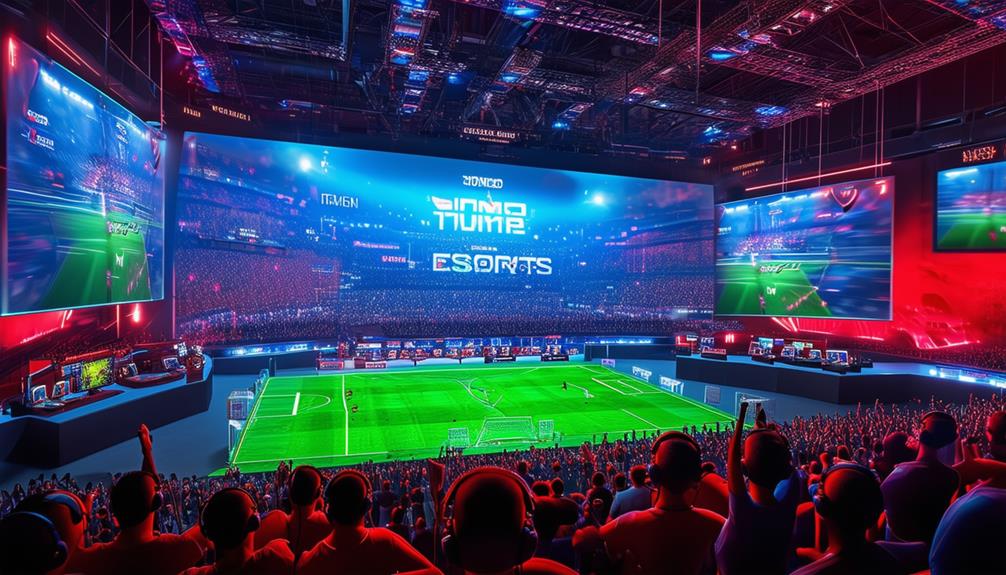
Sports simulators bring the thrill of real-life sports directly to your screen, offering an immersive and competitive gaming experience. Whether you're a fan of racing or soccer, sports simulators provide realistic gameplay that closely mimics the intensity and excitement of actual sports. Titles like Gran Turismo and FIFA are at the forefront, captivating esports enthusiasts worldwide.
In racing simulators like Gran Turismo, specialized equipment such as steering wheels and pedal setups enhance your experience, making you feel like you're truly behind the wheel. The individual competition in these games emphasizes your skill and strategy, not team reliance.
Similarly, FIFA brings the world of soccer to your fingertips, allowing you to control your favorite teams and players. The game's realistic graphics and physics make every match feel authentic. In FIFA esports tournaments, your ability to strategize and execute plays determines your success in individual competition.
Sports simulators offer a unique blend of realism and competitiveness, making them a fundamental part of the esports landscape.
Real-Time Strategy
Real-Time Strategy (RTS) games challenge players to outmaneuver opponents through strategic decision-making in real-time battles. As a player, you must manage resources, build armies, and control units effectively. Popular titles like *Age of Empires IV* and *Starcraft II* are renowned for their complex gameplay and vibrant competitive scenes.
Key aspects to master in an RTS game include:
- Resource Management: Efficiently gather and use resources to build your economy and sustain your army.
- Map Control: Secure key locations on the battlefield to gain strategic advantages.
- Unit Composition: Balance different unit types to create a force capable of countering enemy strategies.
- Timing: Execute attacks and defenses at optimal moments to maximize their impact.
For esports enthusiasts, watching high-level RTS matches is thrilling due to the intense strategic thinking, quick decision-making, and precise micromanagement involved. Competitive RTS events highlight these skills, offering engaging and intellectually stimulating viewing experiences. Mastery of these elements is essential for success in the competitive world of RTS esports.
Frequently Asked Questions
What Are the Most Popular Categories of Esports?
You're asking about the most popular categories of esports? They include First-Person Shooter (FPS) games like Call of Duty, Multiplayer Online Battle Arena (MOBA) titles such as League of Legends, and Fighting Games like Street Fighter. Each category offers distinct experiences and attracts diverse audiences.
What Are the Genres of Esports?
Esports encompasses various genres, including First-Person Shooters (FPS) like Call of Duty, Multiplayer Online Battle Arenas (MOBA) such as League of Legends, Real-Time Strategy (RTS) games, fighting games, and specialized categories like sim racing. Each genre provides distinct competitive experiences, catering to diverse player interests and skills.
What Is the Most Popular Gaming Genre?
The most popular gaming genre currently is MOBA (Multiplayer Online Battle Arena). Games such as League of Legends and Dota 2 dominate this category. These titles thrive on teamwork, strategic depth, and competitive gameplay, attracting vast audiences globally.
How to Analyse Esports?
To analyze esports effectively, gather data from official sources and utilize tools such as spreadsheets and dashboards. Apply techniques including hypothesis testing, machine learning, and data visualization. Additionally, develop a thorough understanding of game mechanics, rules, and strategies for a comprehensive analysis.
Conclusion
Exploring the diverse world of esports uncovers a variety of genres catering to different competitive tastes. MOBAs offer strategic depth, while FPS games deliver fast-paced action. Battle Royales engage players with dynamic maps and survival elements, and fighting games along with sports simulators highlight individual skill and realism.
Real-time strategy games challenge your decision-making and resource management abilities. Each genre brings its unique appeal, ensuring that every competitive gaming enthusiast can find something to enjoy.
Dive in and discover your favorite—the world of esports awaits!

